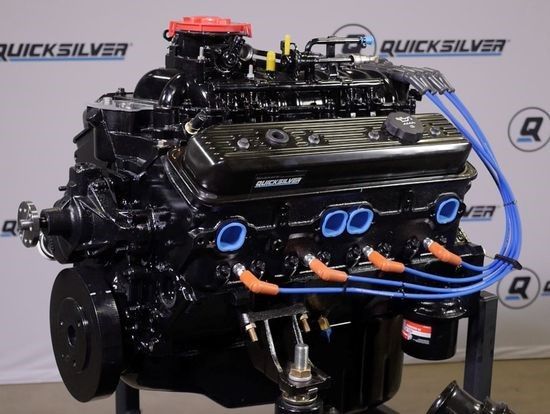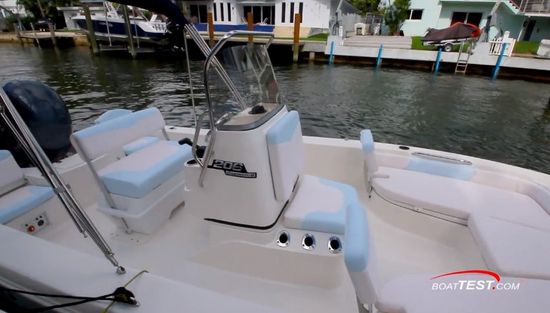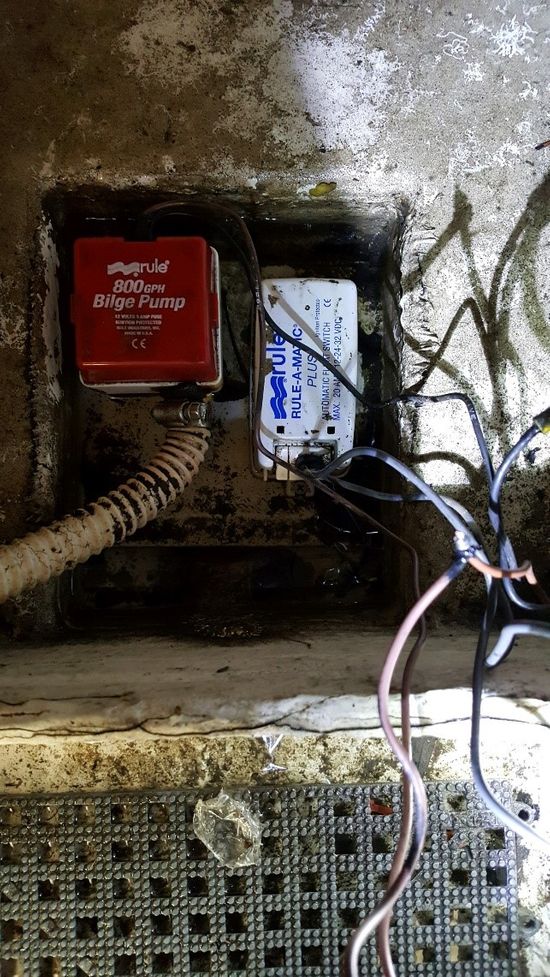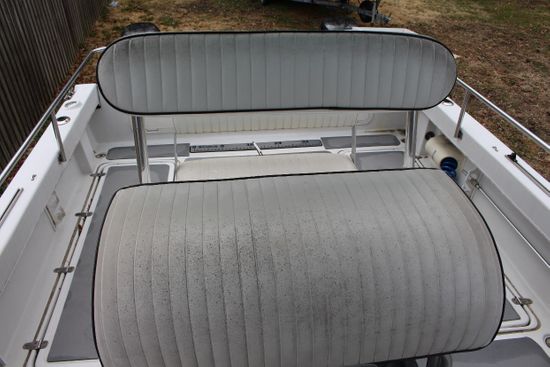What to Look for When Buying a Used Boat

The hull is a critical inspection point for used-boat buyers. What they don’t see can hurt them.
Boaters who are looking to buy a used boat must understand: There’s some risk involved. But when one compares the potential risks with the instant devaluation experienced upon the purchase of a new boat, a pre-owned boat can be quite tempting.
While used-boat prices are subject to the market, boaters do have to consider the dangers involved: Getting a boat with a bum engine, taking ownership of a hull or deck with structural problems, or discovering an electrical system with a few gremlins in residence. And that’s a pared-down list.
While buying a new boat will solve those problems, not everyone can afford that solution. Boaters in the market for a used boat should take their time and do their research. That starts right here and now, with five things boaters need to check out carefully when looking at a used boat.
1. The Engine –

If you’re not very familiar with marine powerplants, find someone who is and bring them along for the sea trial.
If you buy a used boat and the engine turns out to be in bad shape, you could be paying your hard-earned cash for something that’s essentially worthless. Some key items to check for include:
- Powerhead and lower unit oils (make sure they’re not milky in appearance, which indicates water intrusion, and check to make sure they’re clean, which shows how well the owner has or has not maintained the motor)
- Visible corrosion
- Compression (run a compression test)
- The condition of the wiring
Obviously, this is a partial list — it would take a book to go through each and every little detail. The point is, if you’re not very familiar with issues like these, find a friend or hire a pro who is.
Note: automotive mechanics don’t count, unless you’re buying a boat with a marinized automotive engine (as are found on some stern-drive bowriders or runabouts). Marine powerplants, particularly outboards, are significantly different than engines designed for use on land. I once watched a friend of mine who’s been an auto mechanic for close to 30 years buy an outboard that he thought was in good shape, and he spent the next two years battling problem after problem. The third year, he got rid of the boat.
A few other engine-related items to look for that may not be foremost on the mind of a mechanic include propeller condition (if it’s chewed up, it’s an indication that the engine has lived a tough life), the steering system, and throttle and shift controls.
2. The Hull –

Checking the hull of the boat is a top priority, whether it’s fiberglass or aluminum.
Again, obviously, this is an area of significant concern. The only real way to check into the hull’s condition (assuming you’re not looking at a very large boat or yacht, which warrants a full-blown survey) is to take the boat out on the water and run it.
Be sure to open the hatches and look in the bilge, and pay attention to when the bilge pump(s) kicking on and off. Make sure you also shine a flashlight around down there, and eyeball the stringers and bulkheads. Look for excessive cracking or separation, especially where they meet the hull and each other.
On fiberglass boats, you’ll also want to look for deep chinks or cracks in the gelcoat where fiberglass is exposed and may have potential water intrusion. Blisters, which look like small bulges in the hull, are another sign of trouble.
If you’re looking at an aluminum boat, check welds in high-stress areas (like the corners of the transom) to make sure they aren’t cracked or coming apart.
And if the hull is painted with anti-fouling bottom paint, press against the bottom with a screwdriver or metal probe to make sure they used the proper kind of paint and didn’t damage the aluminum.
Painting with a copper-based anti-fouling paint can set up an electrolytic reaction that causes corrosion in aluminum hulls, and eat right through them.
3. Decks –

An issue to keep in mind with a used boat is the risk of rotting.
The biggest danger when it comes to decks is that when they’re cored – usually with plywood on older boats – water intrusion can mean rot.
Modern pressure-treated marine plywood is far more rot-resistant than “regular” plywood, and some companies even offer a lifetime guarantee against rot.
However, some are better than others, while some rot away in as little as seven or eight years.
Fortunately, this issue is fairly easy to spot. Simply walk all over the deck, and feel with your feet as you walk, putting your weight on it, spot by spot. Decks that are going bad have a spongy or springy feeling underfoot, while decks that have maintained their integrity will feel solid no matter how hard you stomp.
4. Transoms –

Any flexing in the fiberglass on a transom is a dead give-away for wood coring or rotting.
Like decks, the use of wood coring and rot are the major issues. It may be a bit tougher to spot in the transom, however, since you can’t walk all over it. What you can do to detect rot in a transom is tap it with a solid metal object, like a quarter.
When you tap an area that’s solid it sounds solid, but when you strike a transom that has rotted away inside, it will have a distinctly hollow sound to it. Another indication of rot can be found where there are screws below the waterline, such as at a fishfinder transducer or a garboard drain. Pull one of the screws. If brown water runs out, you should expect problems.
We should note that in the case of both decks and transoms, rot shouldn’t necessarily be considered a deal-killer. Unless the problem has progressed to a severe state, bad wood can usually be cut out and replaced.
Depending on the size of the boat and the size of the job this can be a lot less expensive than one might imagine. Naturally, you’ll want to either have the current owner pay to have to work done or figure it into the price you pay for the boat.
5. Electrical systems –

Electrical systems on boats can be finicky if not inspected regularly and properly maintained.
It is rare to see a boat with 10 years or more of age on it that doesn’t have some sort of electrical issue. Make sure you spot whatever may be a problem by turning on and off each and every item that’s wired. Bilge pumps, anchor and running lights, livewells, navigational electronics — if it has wires and a switch, put it to the test.
Also look at fuse boxes and breaker bars, to check them for corrosion. Seek out connections that aren’t in plain sight, such as those in the bilges or inside the console, and shine a flashlight on them.
Inspect them and look for damaged wire insulation, poor connections, melted wires or any other indicators of poor condition. And if the boat has a voltmeter at the helm, watch for it to jump or twitch as you flip switches, which can indicate a bad connection.
Bonus Items:

Upholstery sometimes just needs a thorough cleaning — and sometimes it needs full replacement, including the foam.
Canvas, upholstery, carpet, and vinyl — all of these things are found on boats, and all of them have decidedly limited life spans. Replacing them takes time and money, so you want to make sure you understand the need to replace that clear canvas dodger or those seat cushions before you settle on the price that you’re willing to pay for a used boat.
One final parting word: remember what we said earlier — if you can afford to buy a new boat, that may be the smartest move. And if you can’t, when you go shopping for a used boat be careful out there. Very, very careful.